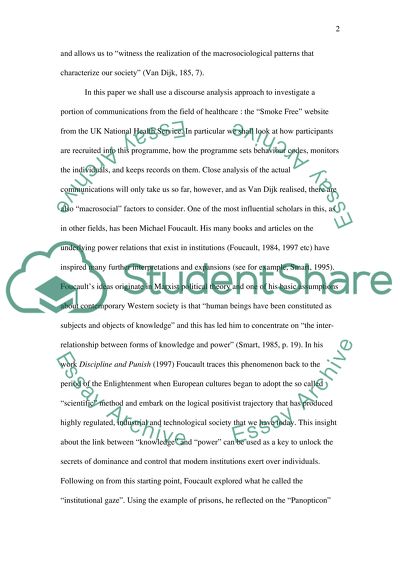Cite this document
(The Institutional Gaze and Disciplining on Smoke-Free Website Case Study, n.d.)
The Institutional Gaze and Disciplining on Smoke-Free Website Case Study. Retrieved from https://studentshare.org/health-sciences-medicine/1568299-the-institutional-gaze-and-disciplining
The Institutional Gaze and Disciplining on Smoke-Free Website Case Study. Retrieved from https://studentshare.org/health-sciences-medicine/1568299-the-institutional-gaze-and-disciplining
(The Institutional Gaze and Disciplining on Smoke-Free Website Case Study)
The Institutional Gaze and Disciplining on Smoke-Free Website Case Study. https://studentshare.org/health-sciences-medicine/1568299-the-institutional-gaze-and-disciplining.
The Institutional Gaze and Disciplining on Smoke-Free Website Case Study. https://studentshare.org/health-sciences-medicine/1568299-the-institutional-gaze-and-disciplining.
“The Institutional Gaze and Disciplining on Smoke-Free Website Case Study”. https://studentshare.org/health-sciences-medicine/1568299-the-institutional-gaze-and-disciplining.


